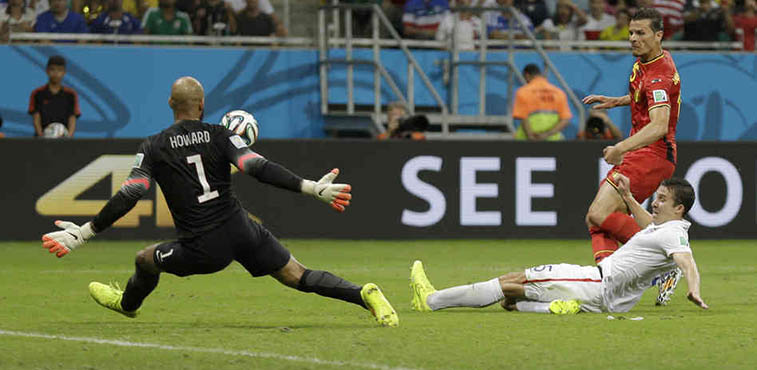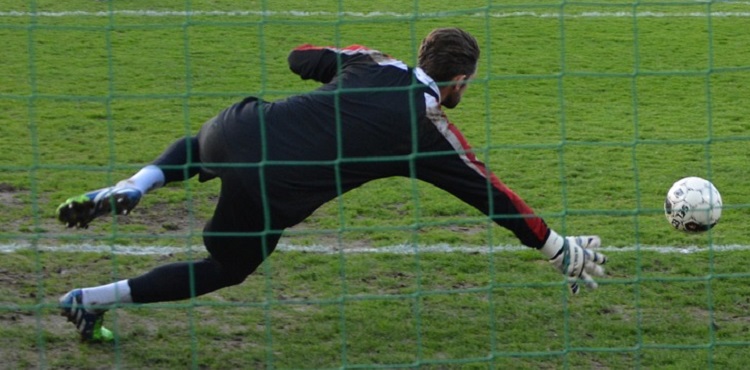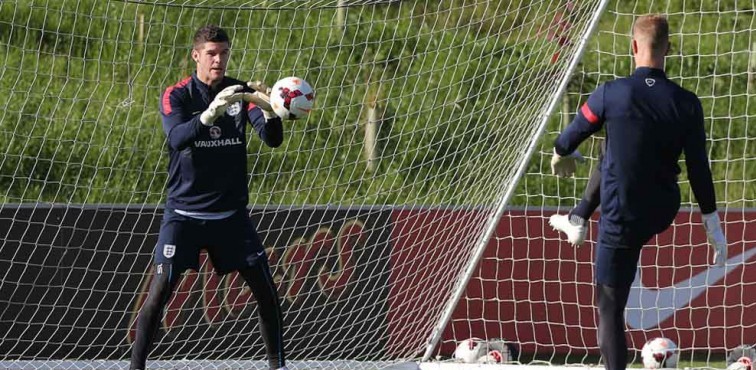Goalkeeper Training on Your Own
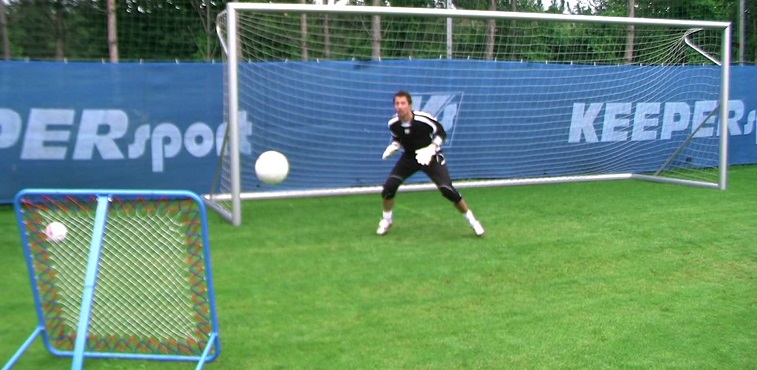
A question that we get asked all the time here at Keeper Portal is ‘How can I train as a goalkeeper on my own?’ Or ‘How can I train during lockdown?
So we’ve put together this guide to help you ensure you make the most of any time you have to become the best keeper you can be!
Firstly, if you’re wondering if you can develop as a goalkeeper on your own, then the answer is a very simple and positive yes!
Of course it is better to have a coach or a friend to help, but there is an almost limitless number of things you can do on your own that will make a big impact when you next take the field.
The first thing to remember is that goalkeeping isn’t just about diving through the air and making a fingertip save – although it is a lot of fun. Amongst other attributes goalkeepers rely on great footwork, accurate distribution, exceptional handling, agility and strength, all of which you can work on without the need for anybody else!
Improving your footwork
The best goalkeepers in the world have exceptional footwork, they move quickly and precisely whilst never taking their eye off the game. This is undoubtedly something you can work on without the need of a partner.
All you need to get started with improving your footwork is some cones (or any type of marker – even sticks and stones!) and a piece of ground to work on – it doesn’t even need to be grass.
The first thing you can do to improve footwork is focus purely on generic speed and agility training drills, this will provide you with a good foundation from which to work and will definitely improve the speed of your footwork.
For exercises on developing pure footwork speed and agility you honestly can’t do much better than borrowing some of the exercises and drills that professional American Football players use and there is a whole host of them available to read and watch over at King Sports Training.
As well as improving the speed of your footwork though it’s important to also work on more natural movement patterns for goalkeepers.
Whilst not the most exciting – the easiest way to do this is to work through a normal footwork drill that would result in a serve at the end of the movement but obviously without a server. You can even do the footwork drill near to a wall / re-bounder and finish with a service to yourself.
You can find tons of goalkeeping drills for footwork just by searching on YouTube or Google, so pick a few you like and work hard on getting them perfected.
Working on your distribution
Distribution is probably the easiest thing to work on as a goalkeeper without anybody else to help you. All you need is a ball (it’s a lot easier if you have more than one) and somewhere to kick / throw it – a football pitch works well!
A lot of goalkeepers generally don’t want to work on their distribution – but football has evolved, a good goalkeeper needs to be able to play football if they want to make it in today’s game. So if you haven’t got anybody to help you develop, then this is a great opportunity to work on your kicking.
We’re always shocked to see the number of keepers out there that can’t take goal kicks – or worst still that have their defenders taking goal kicks for them.
 We won’t go into a lot of detail on goal kicks here, but you can check out our very popular goal kick guide here which will help you get distance and accuracy.
We won’t go into a lot of detail on goal kicks here, but you can check out our very popular goal kick guide here which will help you get distance and accuracy.
Don’t just focus on kicking the ball as far as you can though, mark areas on the pitch for you to aim for with cones or whatever you have lying around and practice getting as close to here as you can.
Mix it up a bit too – don’t always take goal kicks – a lot of the time you will receive a back pass and have to push the ball out of your feet and then get a good connection on a moving ball.
You can do exactly the same accuracy and distance exercises for kicking out of your hands and throwing also, but with these two why not try out new techniques to see if you can develop your arsenal. Instead of a high long punt, why not practice the sidewinder for a low fast delivery to your wingers?
Even with a bag full of balls, I will warn that it can get a bit tedious chasing after the balls you kick down the field on your own but there is no reason you can’t do a round of 10 kick/throws at the start and at the end of your training session and you will be amazed how much you improve after a few sessions.
Developing great handling
Whenever we talk to keepers wanting to train on their own, they seem to forget that handling is something they can work on very easily without the need of anyone else.
Yes you won’t ever be able to simulate it in quite the same way as having someone serving or shooting at you, but a simple ball and wall set up can allow you to work on your handling for hours on end.
This is one of those times where you will only get out what you put in, if you just play a ball gently against a wall and catch the rebound you are unlikely to see any real improvements unless you are just starting out as a keeper.
A coach of mine once told me, it isn’t worth doing anything unless you can do it at match pace, and this is no exception.
First come relatively close to the wall and put a decent amount of power behind the ser
vice, the closer you are the more speed and most importantly angle you will get on the returning ball.
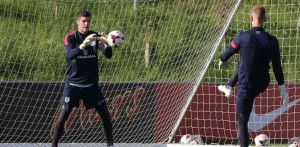 For example, if you serve from your hands and aim for the rebound to come back at head height or above then it will force you to move your hands quickly as you will have your hands down low to release the ball and then have to get them up fast to make the catch using the W technique.
For example, if you serve from your hands and aim for the rebound to come back at head height or above then it will force you to move your hands quickly as you will have your hands down low to release the ball and then have to get them up fast to make the catch using the W technique.
This exercise as with most of the things you can do on your own is all about working on technique and self improvement, there is no instant glory to be had from this and nobody to remark on your great catch, so don’t cheat yourself.
Varying your service will very easily allow you to work on catching using your whole catalogue of handling methods, it is often neglected when using a wall but you can use it very effectively to practice low balls and getting into K shape fast for example.
If you are lucky enough to have a re-bounder net, then you can obviously mix up these exercises even more and also have the added benefit of being able to take it out on the grass and can then work on diving as well.
Building explosive strength
We’re going to do a full post on this in the near future, but building explosive strength can dramatically increase your ability to not only make those top corner saves but also really help with dealing with crosses and challenging for aerial balls.
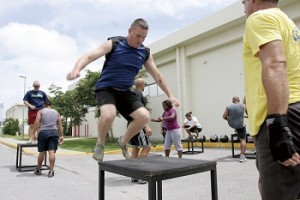 There is only one word you need to know for this and that is ‘Plyometrics’, this is all about building explosive strength and can be focused on the lower body without the need for any expensive gym equipment.
There is only one word you need to know for this and that is ‘Plyometrics’, this is all about building explosive strength and can be focused on the lower body without the need for any expensive gym equipment.
There is a great free resource here with examples of leg plyometric exercises, we’d recommend trying to build single leg / hop exercises in wherever possible as this will more accurately reflect the movements when diving and coming for crosses where a lot of the power comes from one leg.
There are also plyometric exercises that can be done to increase arm / upper body strength also which will obviously help your goalkeeping, but a lot of them do require equipment or a partner but you can find a whole host of exercises on the same site here.
Share your training with us and others
Hopefully this post has given you an idea of a few things you can do to improve your goalkeeping without the need for a training partner or expensive equipment. But we know that members of the GK Union will have some fantastic exercises / drills they use on their own and we would love to hear about them and share them with the rest of our readers.
Why not drop us a comment below with your own ideas or get in touch via social media!
Image courtesy of KeeperSport.eu




